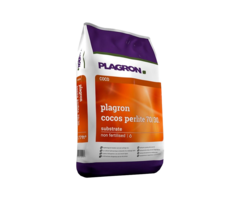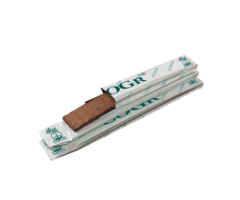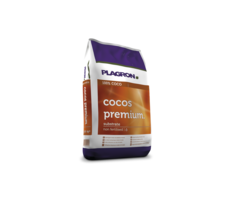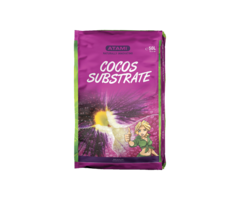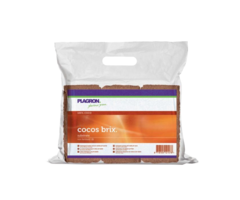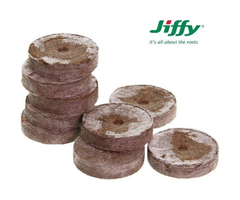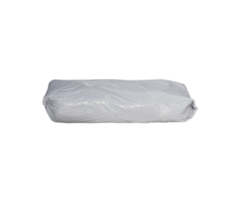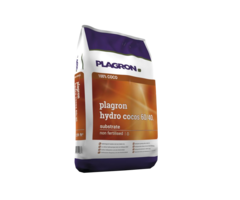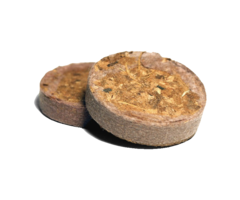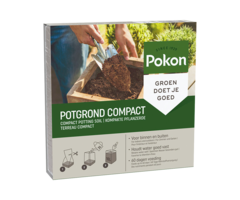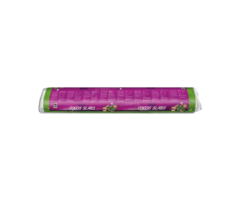Cocos Substrate ~ Growing Mediums
Cocos substrate: an ideal soil for crops
Cocos substrate, also known as coconut fiber, is increasingly used as a growing medium, or culture medium, for plants. It is a sustainable and environmentally friendly alternative to traditional potting soil and offers numerous advantages for both crops and growers.
What is cocos substrate?
Cocos substrate is made from the fibers extracted from the husk of the coconut. These fibers are then processed into a fine and airy material suitable as a growing medium for the crop. Coco substrate has a neutral pH and contains no harmful substances, making it safe for plants and the environment.
 The advantages of cocos
The advantages of cocos
Cocos substrate offers several advantages over traditional potting soil. For example, Coco bricks are a lot lighter in weight, making it easier to handle and less stressful on the back. In addition, cocos substrate has excellent water and air holding capacity, allowing the roots of the crop to breathe well and reducing the chance of suffocation or rotting. In addition, cocos substrate naturally contains good nutrients and minerals, such as potassium and magnesium, which are essential for healthy plant growth.
How do you use cocos substrate?
Cocos substrate can be used as a growing medium in several ways. For example, you can mix it with other potting soil or vermiculite to improve structure and optimize moisture and air management. In addition, you can also use it as an alternative to hydro pebbles in hydroponic cultivation. It is important to wet cocos substrate well before using it so that it can retain moisture optimally and the roots of the plants can grow well.
Conclusion
Cocos substrate is a sustainable and environmentally friendly alternative to traditional potting soil. It offers numerous benefits to both the crop and the grower and can be used in a variety of ways as a growing medium. By choosing cocos substrate, you contribute to a healthy and sustainable growing of plants.
Cocos substrate: an ideal soil for crops
Cocos substrate, also known as coconut fiber, is increasingly used as a growing medium, or culture medium, for plants. It is a sustainable and environmentally friendly alternative to traditional potting soil and offers numerous advantages for both crops and growers.
What is cocos substrate?
Cocos substrate is made from the fibers extracted from the husk of the coconut. These fibers are then processed into a fine and airy material suitable as a growing medium for the crop. Coco substrate has a neutral pH and contains no harmful substances, making it safe for plants and the environment.
 The advantages of cocos
The advantages of cocos
Cocos substrate offers several advantages over traditional potting soil. For example, Coco bricks are a lot lighter in weight, making it easier to handle and less stressful on the back. In addition, cocos substrate has excellent water and air holding capacity, allowing the roots of the crop to breathe well and reducing the chance of suffocation or rotting. In addition, cocos substrate naturally contains good nutrients and minerals, such as potassium and magnesium, which are essential for healthy plant growth.
How do you use cocos substrate?
Cocos substrate can be used as a growing medium in several ways. For example, you can mix it with other potting soil or vermiculite to improve structure and optimize moisture and air management. In addition, you can also use it as an alternative to hydro pebbles in hydroponic cultivation. It is important to wet cocos substrate well before using it so that it can retain moisture optimally and the roots of the plants can grow well.
Conclusion
Cocos substrate is a sustainable and environmentally friendly alternative to traditional potting soil. It offers numerous benefits to both the crop and the grower and can be used in a variety of ways as a growing medium. By choosing cocos substrate, you contribute to a healthy and sustainable growing of plants.
Cocos substrate: an ideal soil for crops
Cocos substrate, also known as coconut fiber, is increasingly used as a growing medium, or culture medium, for plants. It is a sustainable and environmentally friendly alternative to traditional potting soil and offers numerous advantages for both crops and growers.
What is cocos substrate?
Cocos substrate is made from the fibers extracted from the husk of the coconut. These fibers are then processed into a fine and airy material suitable as a growing medium for the crop. Coco substrate has a neutral pH and contains no harmful substances, making it safe for plants and the environment.
 The advantages of cocos
The advantages of cocos
Cocos substrate offers several advantages over traditional potting soil. For example, Coco bricks are a lot lighter in weight, making it easier to handle and less stressful on the back. In addition, cocos substrate has excellent water and air holding capacity, allowing the roots of the crop to breathe well and reducing the chance of suffocation or rotting. In addition, cocos substrate naturally contains good nutrients and minerals, such as potassium and magnesium, which are essential for healthy plant growth.
How do you use cocos substrate?
Cocos substrate can be used as a growing medium in several ways. For example, you can mix it with other potting soil or vermiculite to improve structure and optimize moisture and air management. In addition, you can also use it as an alternative to hydro pebbles in hydroponic cultivation. It is important to wet cocos substrate well before using it so that it can retain moisture optimally and the roots of the plants can grow well.
Conclusion
Cocos substrate is a sustainable and environmentally friendly alternative to traditional potting soil. It offers numerous benefits to both the crop and the grower and can be used in a variety of ways as a growing medium. By choosing cocos substrate, you contribute to a healthy and sustainable growing of plants.

